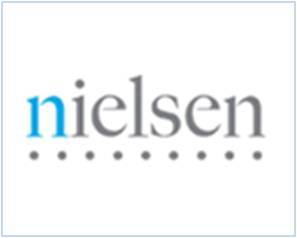Indian shoppers to triple the spending on FMCG at modern retail stores by 2015: Nielsen Study
Sales at modern trade stores are up 31 percent since last year across India's socio economic spectrum. For certain food and household good categories, modern trade outlets account for a significant portion of total category sales. Over half (54%) of packaged rice, for example, is purchased at modern trade stores, as are 42 percent of breakfast cereal purchases. And, for certain types of cleaning products and other household goods, similar percentages of sales occur in modern outlets.
"The Indian consumer is clearly enjoying the modern trade shopping experience and is increasingly shopping there, as is evident from the increased spending at modern trade stores," said Roosevelt D'Souza, executive director, Nielsen India. "This is also a strong indicator of the growth potential of this trade format."
Increased choice is leading Indian consumers to experiment more with new formats and stores with 36 percent of shoppers indicating they have shopped at more than two stores during the month, compared to 20 percent one year ago. Inflation is also encouraging Indian shoppers to be more discerning with many seeking value through promotions, sales and through private label brand purchases.
"Indian consumers have always been value conscious, but now even more so given inflationary pressures on the household budget. The access to both modern and traditional trade formats coupled with an awareness of various deals being offered in the market, allows the consumer to make a more informed value-for-money shopping decision," says D'Souza.
Among the categories that thrive in modern trade are many of the same categories with the highest contributors to private label growth, such as packaged rice and household cleaners. India's modern trade shoppers now spend over $100 million USD on private label goods per year and this amount is expected to reach $500 million USD by 2015. Despite the relatively recent prominence of private label products in India, it is already close to seven percent of modern trade sales, compared to only one percent in China. Key to the growth of private label goods in India compared to other Asian countries is the value-seeking Indian consumer and their comfort with unbranded/generic products.
While modern trade is growing in popularity in India, traditional trade channels remain popular as well. The main factors sustaining the kirana advantage are the convenience of access, credit, availability of home delivery, and trusted relationships between the shopper and local grocer. But modern trade outlets stand to gain the most from the increasing spending power of India's growing middle class.
"The relationship with the local grocer is quite often a personal one built over time. More often than not in urban areas, the product portfolio at the neighborhood grocer is more attuned to the specific needs of shoppers in that locality, thereby making it more convenient for the consumer to shop there," said D'Souza.
As the retail landscape evolves, more retail and shopping experimentation is likely to continueâ€both in numbers of stores frequented and in types of specialty retailers visited. Connected and tech-savvy Indians will increasingly engage with social media and networks as a way to discuss products/brands and to seek value through group promotional websites.
"Marketers who understand the future of the Indian retail environment and how consumer shopping behavior is changing will thrive in this dynamic and expanding market," said D'Souza.










Share
Facebook
YouTube
Tweet
Twitter
LinkedIn